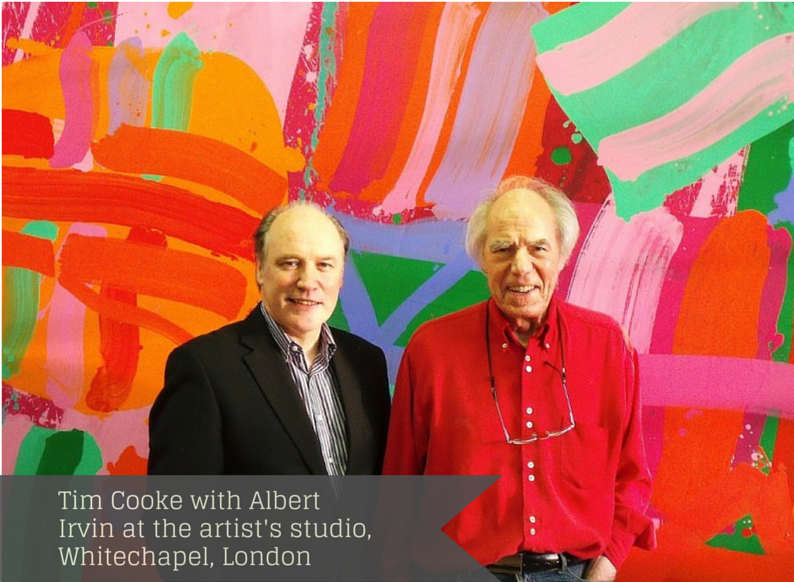London
By Tim Cooke
With the passing of Albert Irvin RA, grandee of British art, a bright star has fallen from the sky, not just in the sphere of art but in the whole firmament of the human spirit.
What first attracted me to Bert’s work was the purity and sheer force of the joy he expressed through paint and colour. His shining sense of optimism and celebration leapt forth from the canvas with breathtaking force, arresting, awe-inspiring and powerfully attractive to the eye and to the heart.
If his works did not exist, I for one could not possibly imagine them. He portrayed exuberance on a monumental scale. His steadfast relationship to painting and the enduring enthusiasm of his enterprise were warming messages in a world in which noise too often triumphs over substance.
Works such as the Tate’s Flodden (1978) and the privately owned Boadicea (1979) are magnificently epic.
Rivoli (1981), Sultan (1982), Festival (1983) and Calabria (1984) offer annual increments in dramatic boldness.
I hold a soft spot for Waring and Skipper (both 1991) because they are named after streets in my home city of Belfast which, when he painted them, still stood in need of all the reminders it could get that hope and colourful imagination must never be abandoned.
The invigorating and uplifting Hollywood (1995) at 54 x 270 inches swept majestically over more than 14,500 square inches of wall space in London’s Chelsea and Westminster Hospital.
Albert Irvin’s vision, like so many of his canvasses, was large. So too his heart and spirit. It was a privilege to come within his orbit. Bert himself described his subject matter as ‘the experience of being in the world’. My experience was and is richer for his being in the world.

